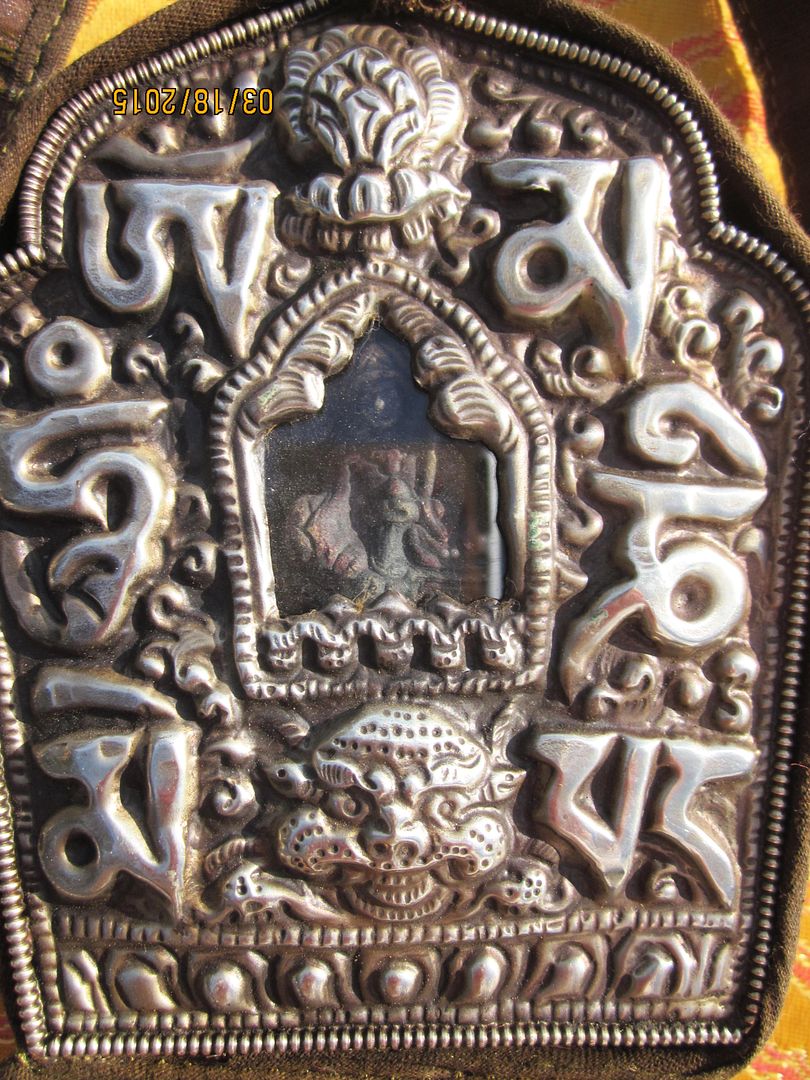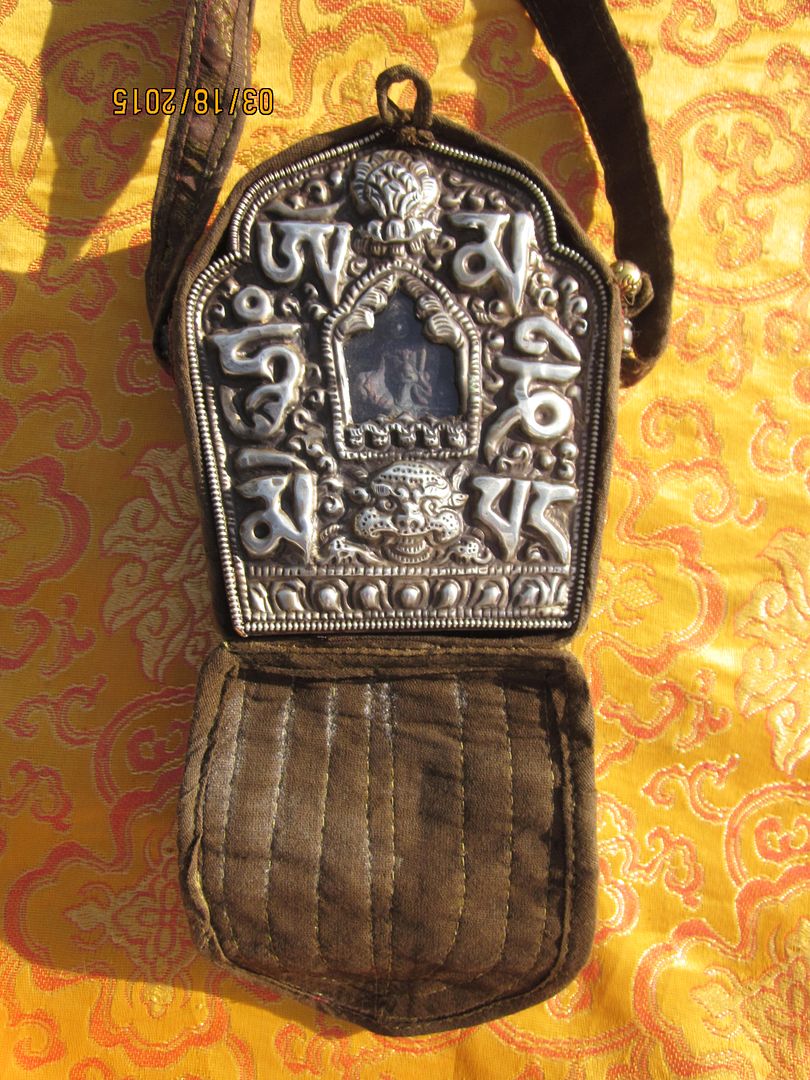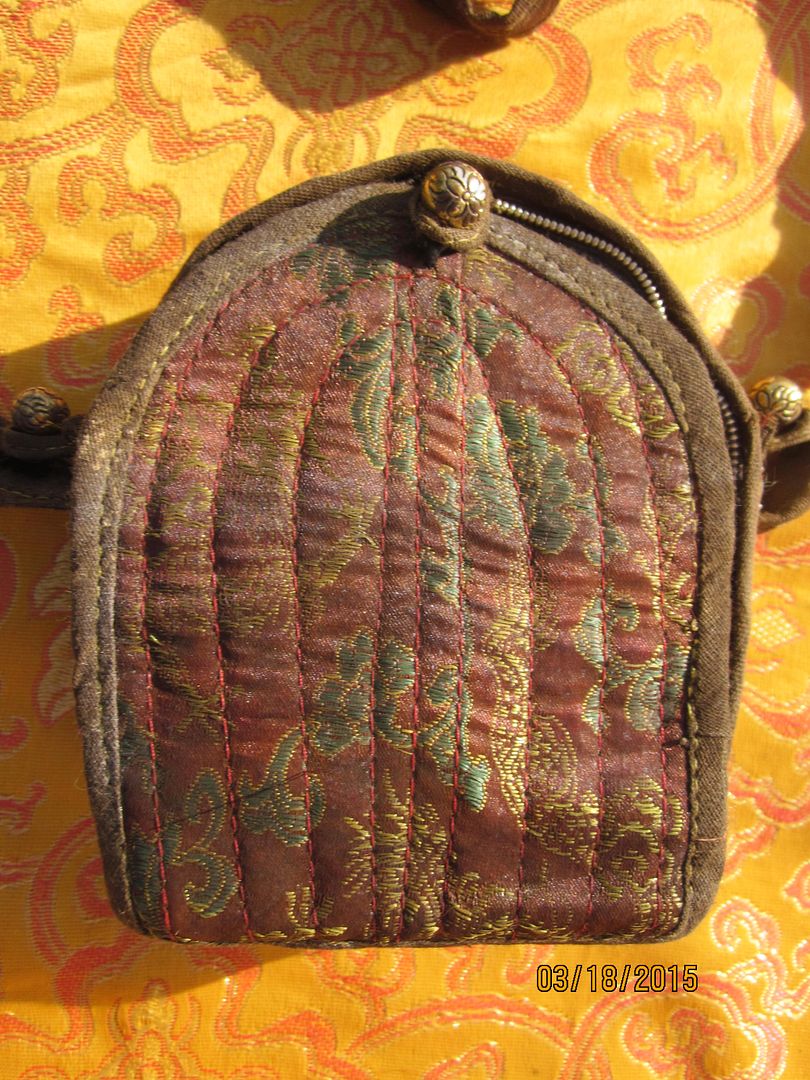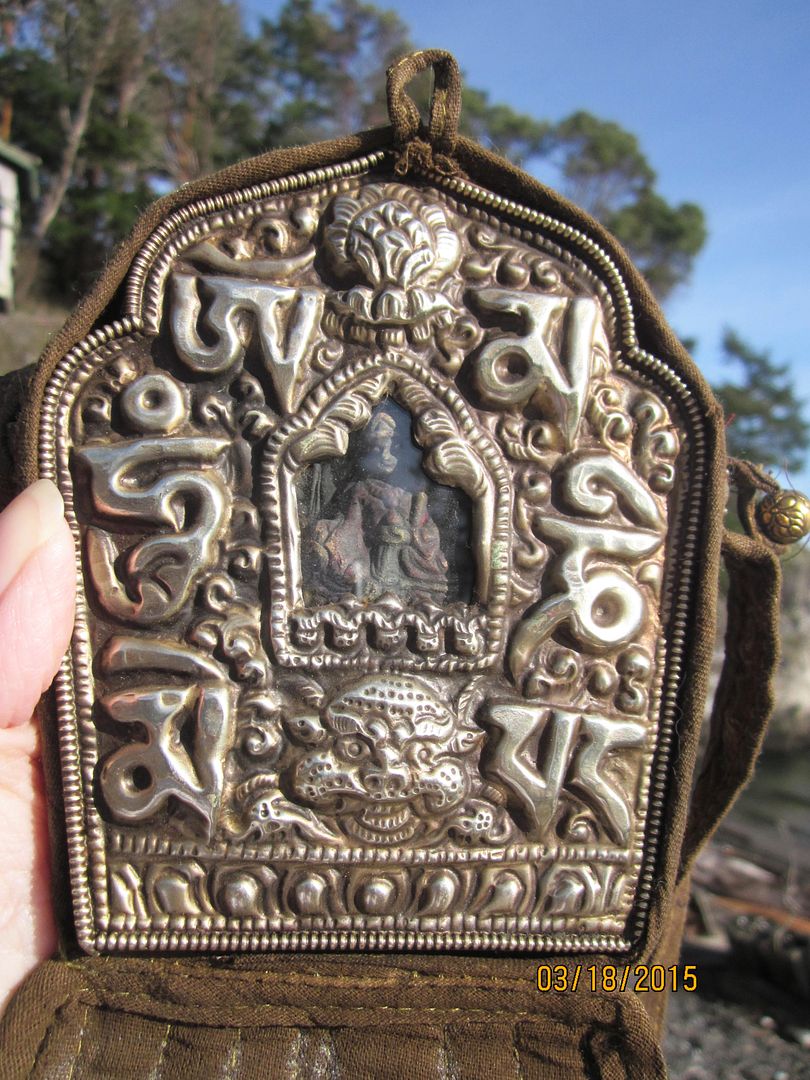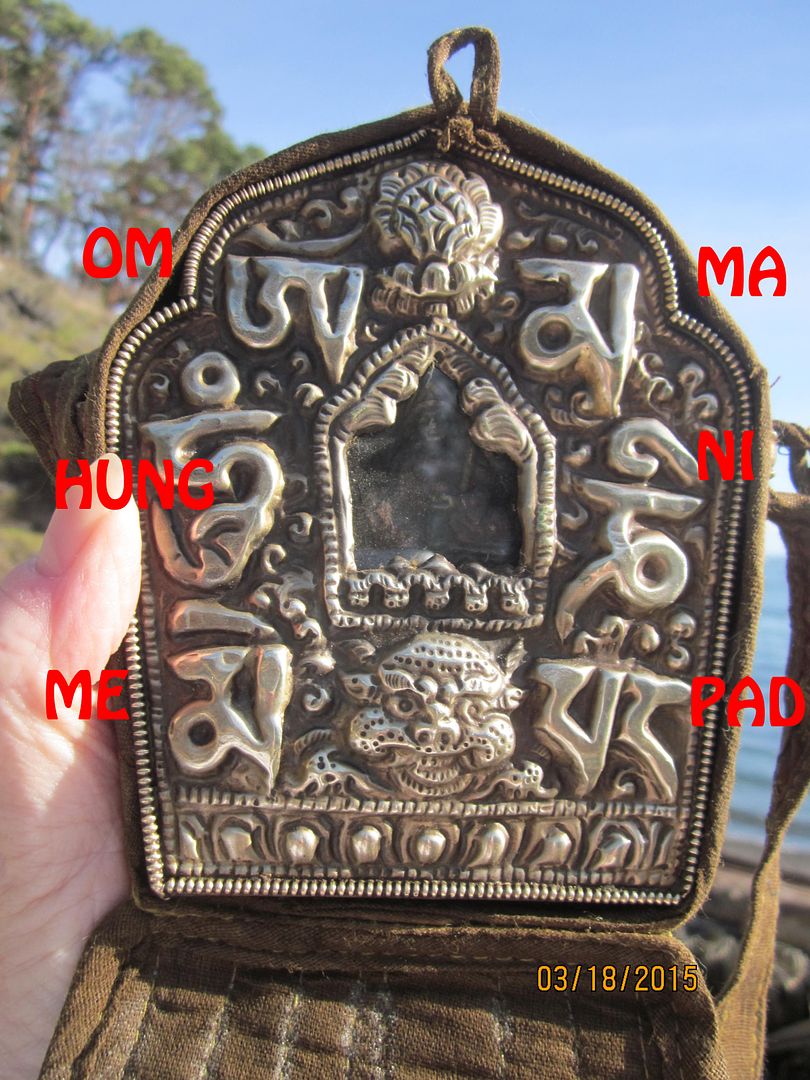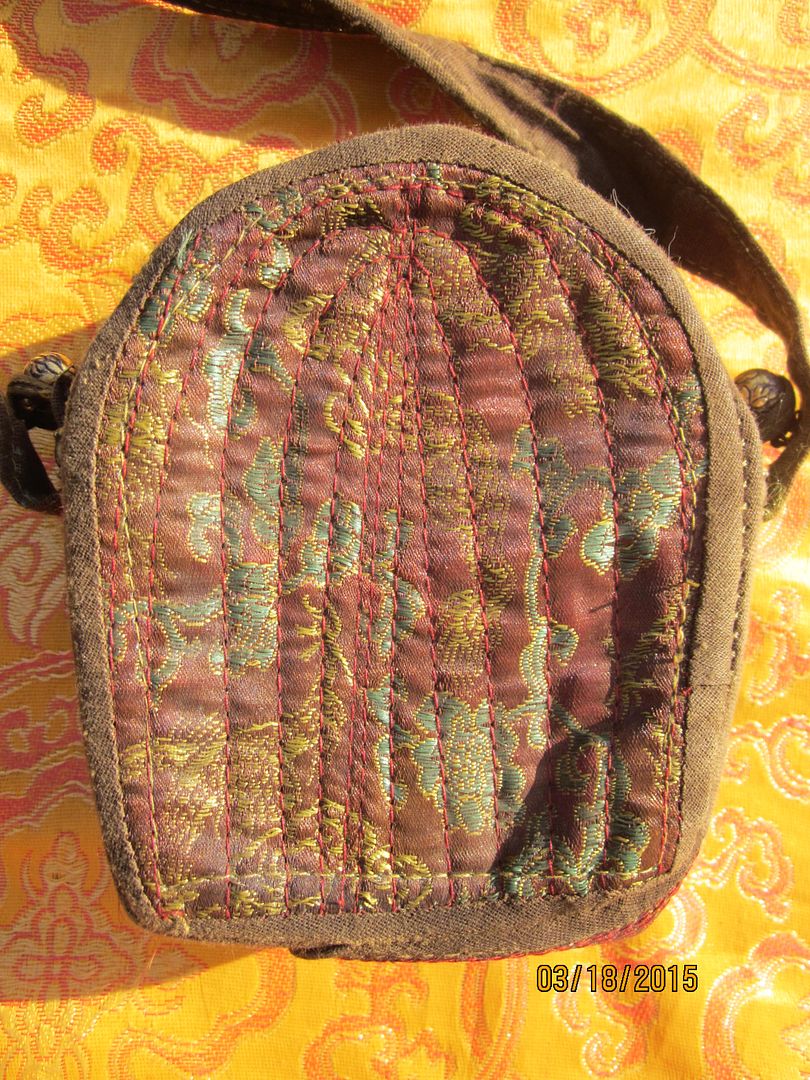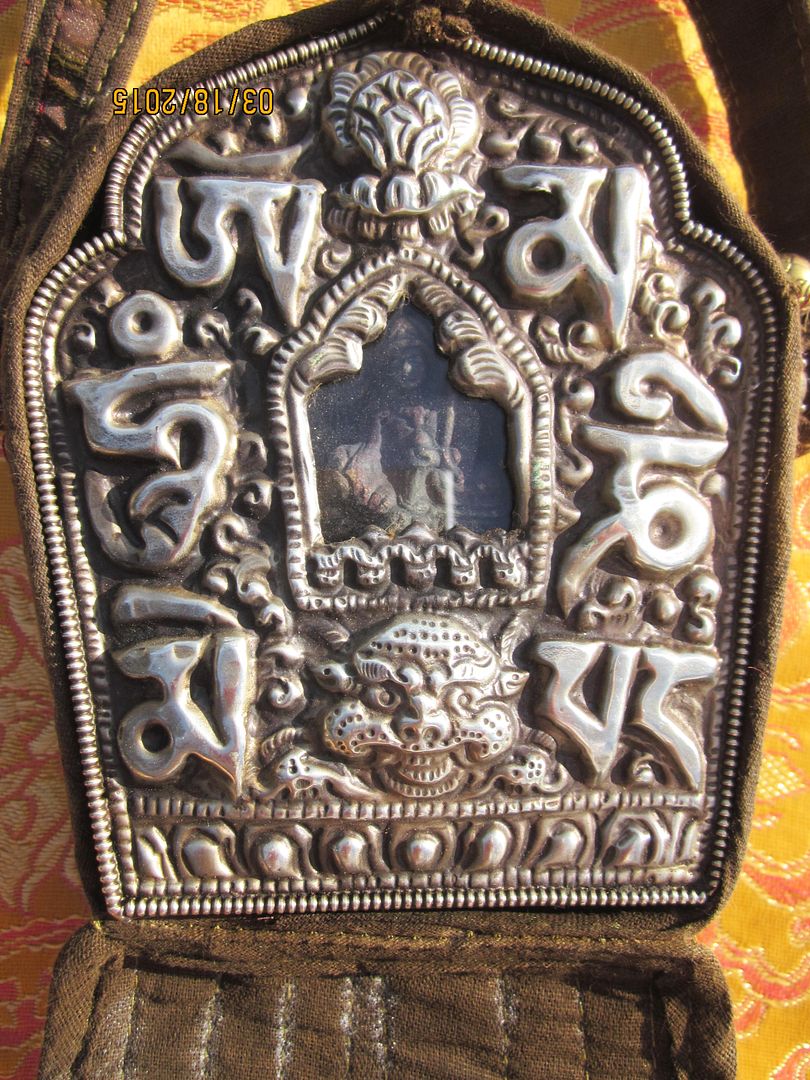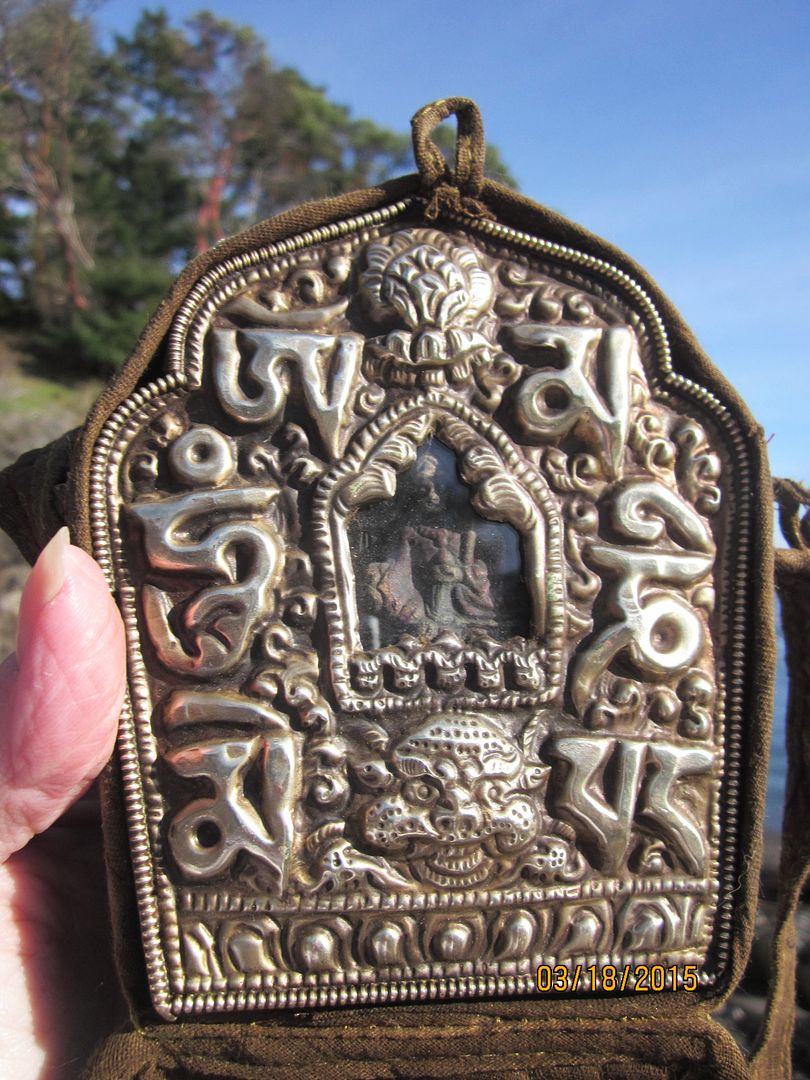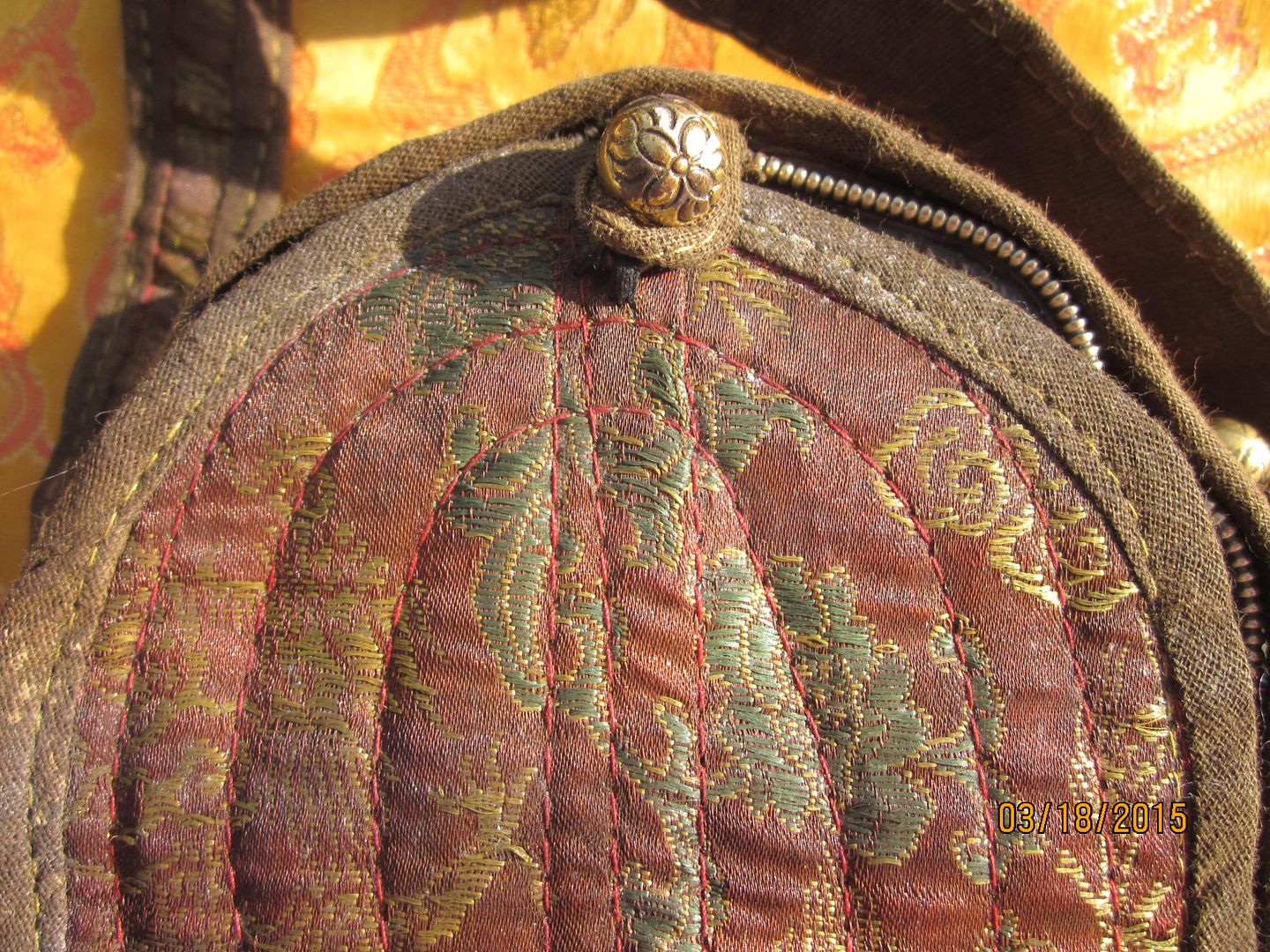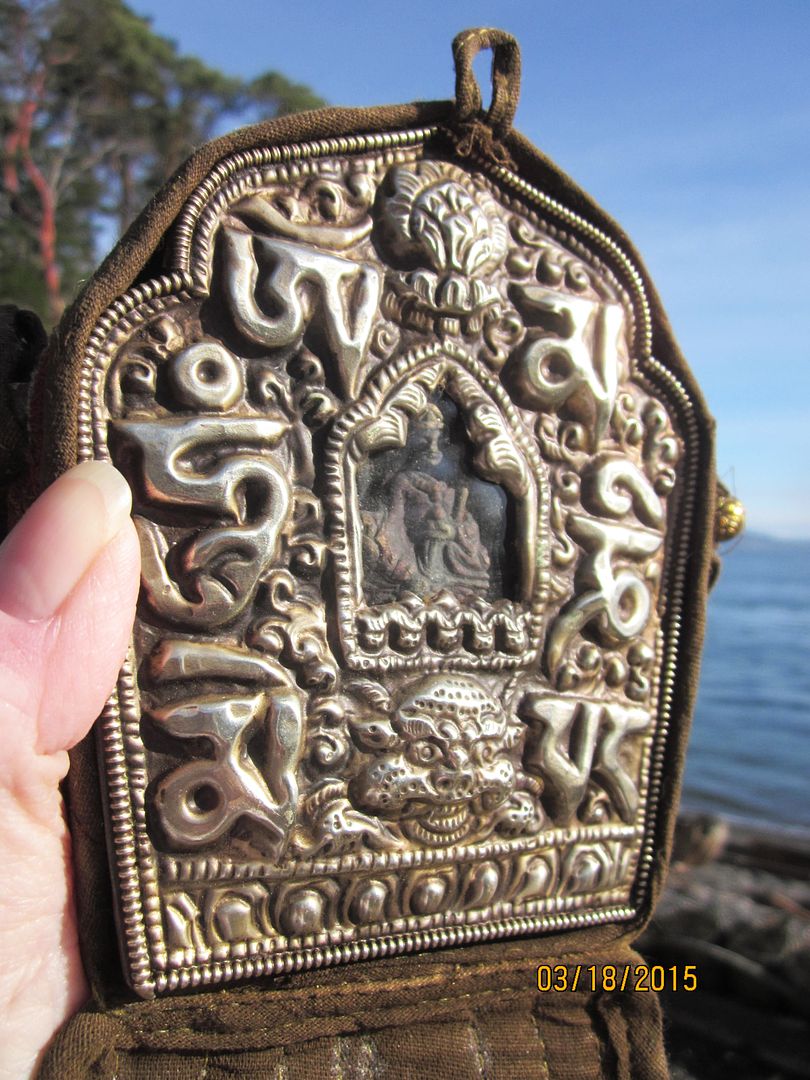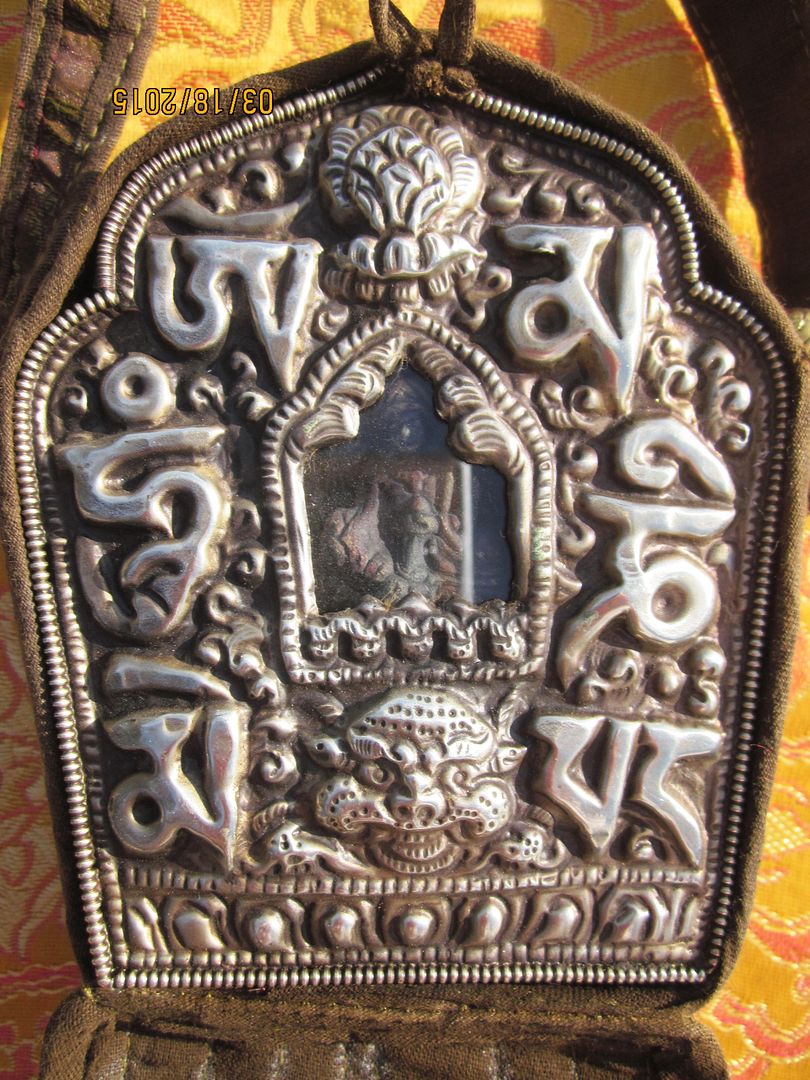VERY RARE TRADITIONAL LARGE 5+" BUDDHIST GHAU GAU AMULET BOX SHRINE HAND CRAFT TIBETAN KHAMPAS
Free shipping USA only USA seller
- traditional & authentic Tibetan Buddhist "portable shrine" amulet box
- this is a rare item, hard to find and not found elsewhere in eBay
- PLEASE NOTE: some of this most current batch from Nepal show some clear staining or discoloration that darkens the tone of the fabric of the outer case, though this in no way affects the beauty of the shrine. THIS IS A MINOR COSMETIC FLAW. But for this reason, I am discounting these.
- unique and beautiful shape!!
- the silver face of shrine is adorned with the Tibetan symbols for Om Mani Padme Hung
- crafted (and probably invented by) Tibetan Khampas who historically led a nomadic life-style, now refugees in Nepal
- the sides and back of the beautifully shaped box is made from metal
- the pattern of the fabric used to make the case may vary, though all are subtle earth tones
- the ghau box is not removed from the case; the case is simply opened
- maybe be strung around the neck or tied off to a belt or sash
- the box is attached to a long (40 - 42") fabric strap by a brass button closure on each side and it can be removed by unbuttoning
- weighs half a pound, unpackaged
- Please note: the silver face of the shrine is extremely sculptural, not remotely flat!!
- features a small glass window for viewing the deity inside
- I currently has shrines for Shakyamuni Buddha or Green Tara, while they last...
- the box closed via a fabric loop that goes over a matching brass button
- the ghau box is a bit over than 5 inches tall and is 4 inches at the widest point and 1 3/4 in depth
- the fabric "necklace" that goes around your neck or onto your belt is 3/4" wide and double layered
- brand new and imported directly from Nepal
- everything I sell ships free inside the USA!
- I ship the same day or next business day, without fail!!
- as per eBay policy, buyer pays return shipping
- 30 day return policy
Please note that in the close up picture on the left I have tried to angle the face of the shrine so that you can see how much the symbols stand out from the face - just amazingly crafted!! I also carry a similar, though smaller and lighter ghau shrine that features either Manjushri or Shakyamuni Buddha, if I have both in stock. The pictures below compare that smallest shrine with this biggest one.
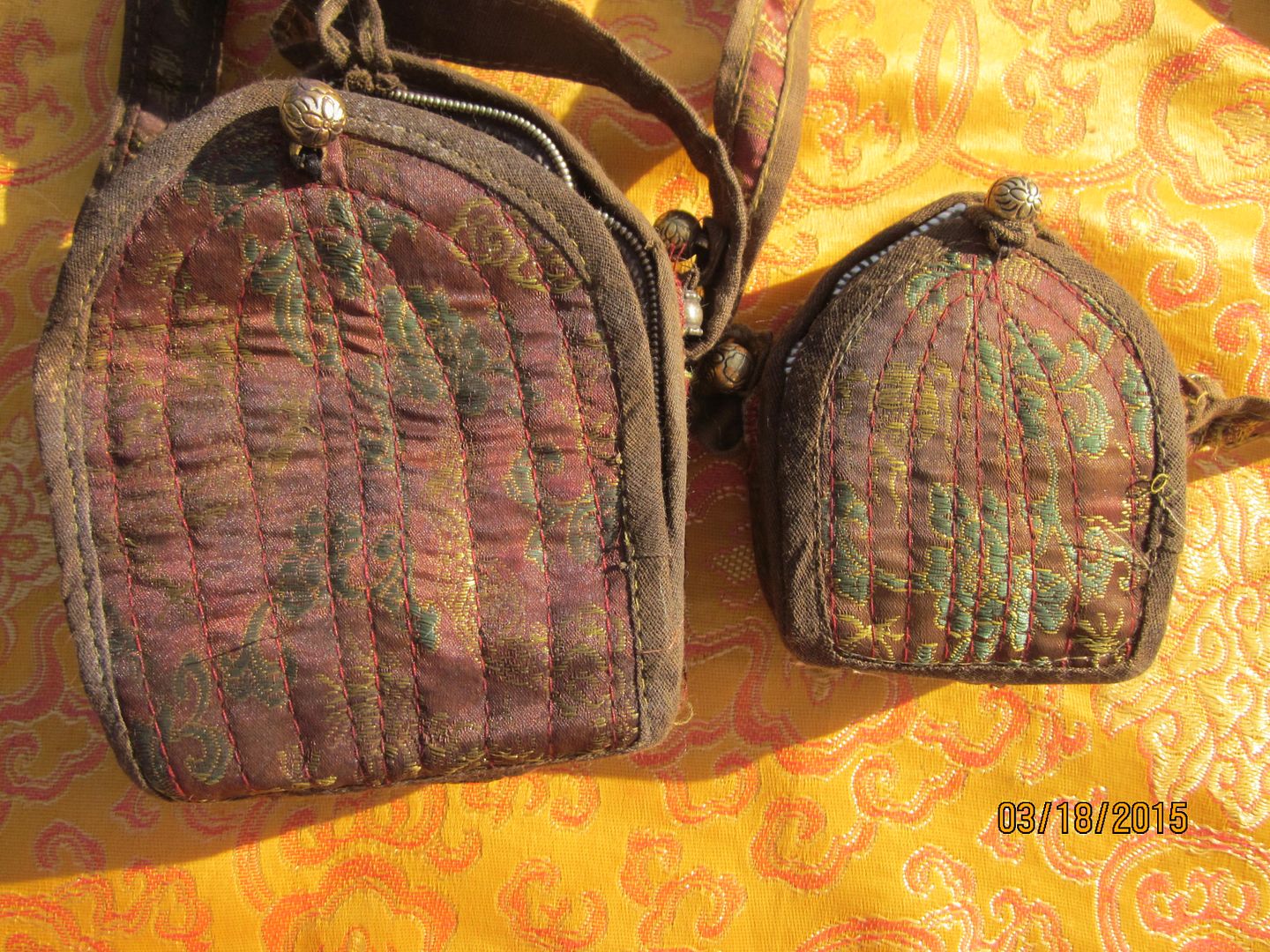
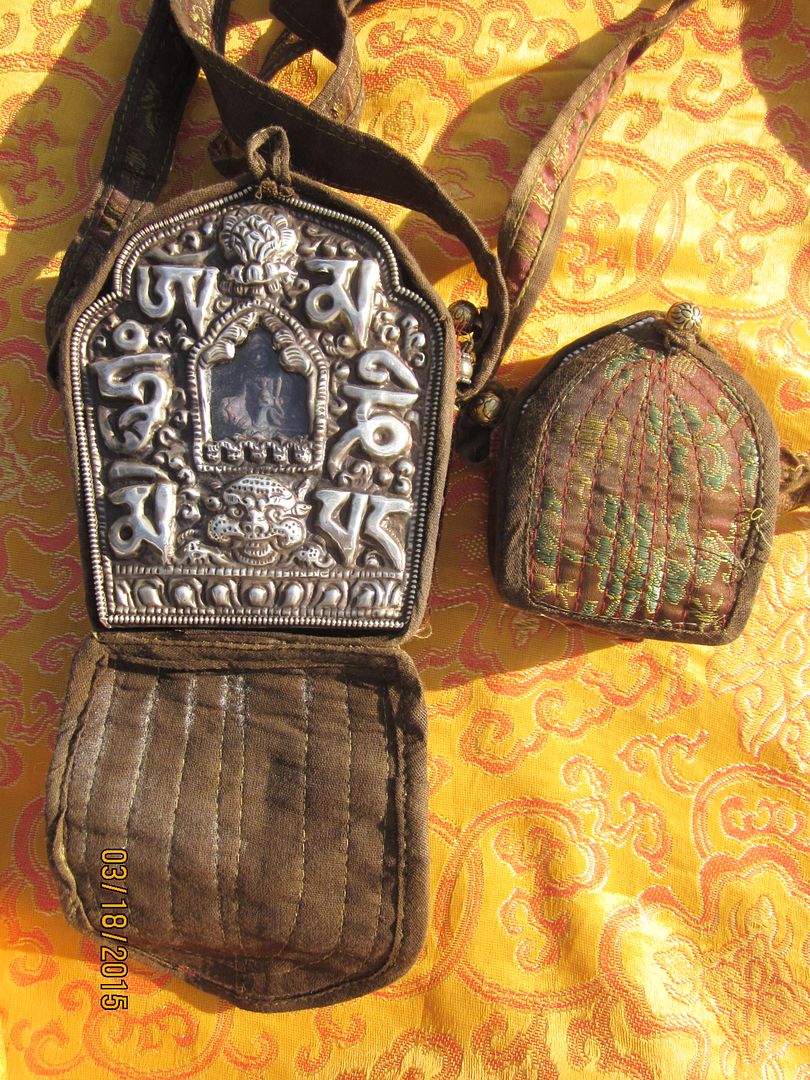

The Khampas (people of Kham), who seem to have a reputation in Asia reminiscent of the Sioux on this continent, are a striking people. Incredibly skilled horse riders, they were also fierce warriors who fought a guerilla war against the Chinese for years in the face of scorched earth tactics and overwhelming odds before being finally crushed. Yet Kham was also filled with monasteries and produced many of the greatest meditation masters of the Kagyu and Nyingma Buddhist traditions. Of those who escaped into exile, a number of Khampa Buddhist teachers played key roles in introducing Tibetan Buddhism in the West.
The Kham Tibetans, better known as Khampa/Khamba ཁམས་པ་, number around 2 million. Khampa are traditionally known as the warriors of Tibet. Whether from Beijing or Lhasa, the Khampa have always been resistant to outsiders controlling their land. Throughout their long history, the Khampa have fought and killed anyone who tried to settle in their region.
Tibetan nomads live either in black yak wool tents or in white canvas tents.Their lives are simple and their possessions are few. Inside the tent, there will be a stove in the center. There are no trees in the nomadic regions of Tibet so the main fuel used is dried yak dung. Each morning, the women go and spread yak dung out to be dried. This is one of the most important chores since all the cooking and boiling of water as well as heating the tent depends on the use of dried yak dung. The nomadic regions of Tibet are extremely cold and can often times have snow even in the summer. Outside the tent there is usually a huge long wall of dried yak dung. Often times, Tibetan Buddhist symbols are made in the dried yak dung. Inside the tent there is also a small pile of dried yak dung.
| ||


 |  | |
